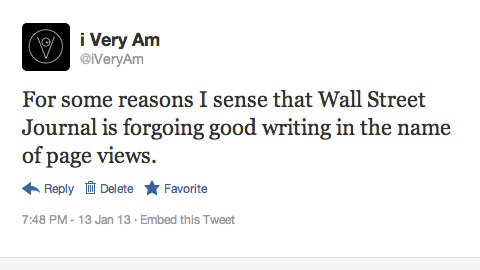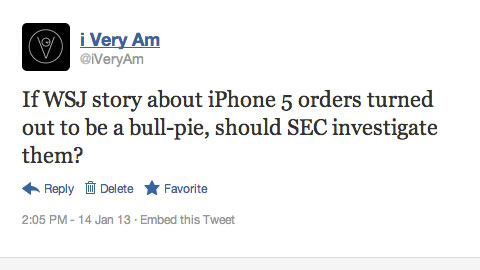
This seems to be the norm now, even with “reputable” publications.
- Report rumors, citing “people familiar with the matter” regardless how absurd it sounds.
- Blame “last minute changes” when rumors did not come true.
Daisuke Wakabayashi, reporting for the WSJ on August 14, 2014 (paywall alert!):
Apple is considering using sapphire screens in more expensive models of the two new, larger iPhones it plans to debut this fall, if it can get enough of the material, people familiar with the matter say. Some analysts expect Apple to charge more for the phones than previous new models, because of increased component costs.
John Gruber, responding to the WSJ article on August 15, 2014:
First, I don’t understand how a report on August 14 could plausibly imply that Apple still doesn’t know what material they’re going to use for the displays on the new iPhones they plan to introduce on September 9, and which (if the schedule is like last year) they probably plan to ship to customers on September 19. I would think that people who are truly “familiar with the matter” already know, today, whether the new iPhones are going to use sapphire displays.
Logic and common sense are on the side of Gruber.
Daisuke Wakabayashi, reporting for the WSJ on October 7, 2014 (paywall alert!):
In the end, Apple decided to scrap the sapphire screens for the iPhone 6 and iPhone 6 Plus and stick with Corning Inc. GLW -2.50% ’s heavy-duty Gorilla Glass.
The Wall Street Journal reported in August that Apple was considering using sapphire screens for some iPhones.
Based on the article, it sounds like the plan was scrapped in the last minute.
Daniel Eran Dilger, responding to WSJ article on October 7, 2014:
WSJ prints speculation, blames Apple when wrong
…….
Wakabayashi was so confident in the rumor that the Wall Street Journal headlined his story, “New iPhone, A Sapphire Screen and a Higher Cost,” although it also hedged the report with a minor subhead: “Apple considers using harder material in pricier models.”
The report appears to have been based almost entirely upon the speculation of Eric Virey, “a senior analyst at French research firm Yole Développement,” who had been promoting the idea that Apple had partnered in GT Advanced specifically with iPhone screens in mind.
Unsubstantiated rumors can cause harm, but sadly those who reported them often go unpunished.


